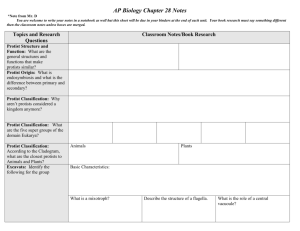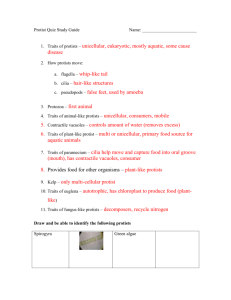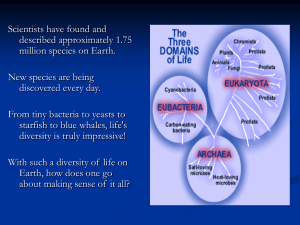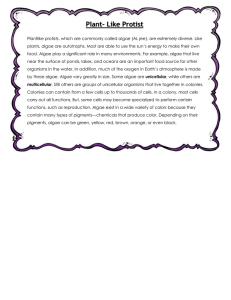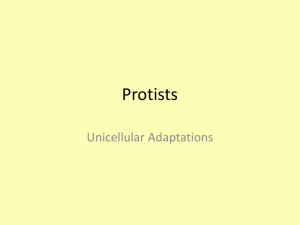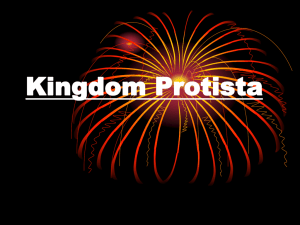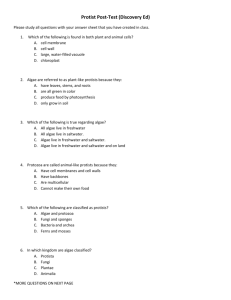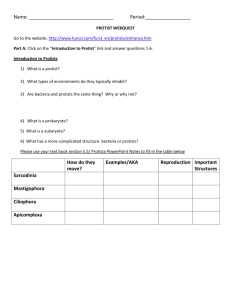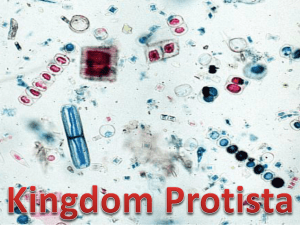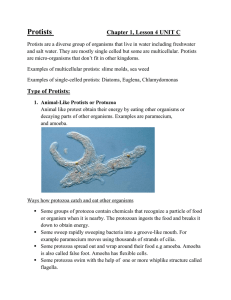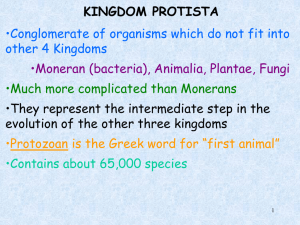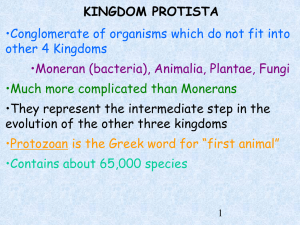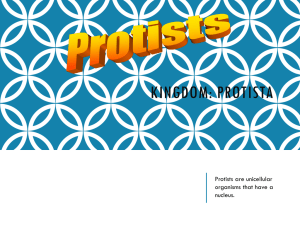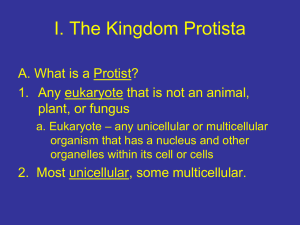vector
advertisement
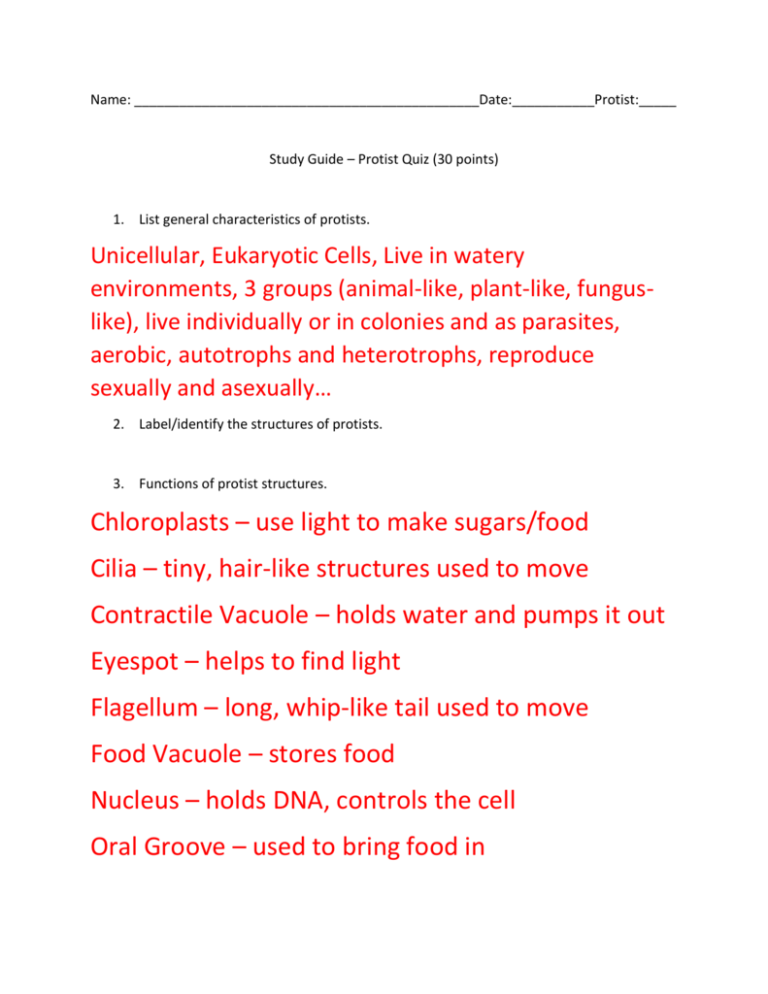
Name: ______________________________________________Date:___________Protist:_____ Study Guide – Protist Quiz (30 points) 1. List general characteristics of protists. Unicellular, Eukaryotic Cells, Live in watery environments, 3 groups (animal-like, plant-like, funguslike), live individually or in colonies and as parasites, aerobic, autotrophs and heterotrophs, reproduce sexually and asexually… 2. Label/identify the structures of protists. 3. Functions of protist structures. Chloroplasts – use light to make sugars/food Cilia – tiny, hair-like structures used to move Contractile Vacuole – holds water and pumps it out Eyespot – helps to find light Flagellum – long, whip-like tail used to move Food Vacuole – stores food Nucleus – holds DNA, controls the cell Oral Groove – used to bring food in Pellicle – rigid outer structure, holds cell shape Pseudopods – used to move and eat 4. What structures do protists use to move? See questions 3. 5. Symbiosis, mutualism, and parasitism. Symbiosis – when two organisms live in a relationship where one lives in or on the other and benefits from the relationship. Mutualism – symbiosis where both benefit Parasitism – symbiosis where one benefits and one is harmed 6. Autotroph (chloroplast) and Heterotroph. Autotrophs produce their own food. Heterotrophs eat others. 7. Three groups of protists. Animal-like – move and eat others Plant-like – have chloroplasts to make their own food Fungus-like – grow on the food source they eat 8. Malaria, trypanosomes, red tides, and dead zones. Malaria is caused by a protist and is spread by the mosquito, which acts as a vector. Bed nets are the most cost effective way to reduce numbers of infected people in developing nations. Trypanosomes also have an insect vector; in Africa it is the tsetse fly, and in Central/South America it is the kissing bug. Bed nets can also protect people from getting bitten. Red tides are caused by dinoflagellates, plantlike protists. They often occur in warm, nutrient rich waters. Everything in a red tide dies except bivalves, which are poisonous if eaten. Dead Zones are most often found in industrial nations where rivers, carrying fertilizer and animal waste, empty into the oceans. The process of eutrophication results in a dead zone. There are constant dead zones in the Gulf of Mexico off the Mississippi Delta, and in the Chesapeake Bay. Steps to a dead zone: fertilizer/animal waste washes into rivers and lakes causing algae blooms in the rivers and lakes, and on a larger scale in the oceans they empty into. The algae at the surface blocks out all light, killing the algae and plant life underneath. Bacteria decompose the dead plant life, using up all the dissolved oxygen. All life in the water dies. 9. Gametes, diploid, haploid, spore. Gametes are sex cells, like sperm and eggs. Gametes are haploid cells because they only contain half the genetic information, or half the DNA. Body cells are diploid and have a complete set of genetic information, or all the DNA. Spore are reproductive cells with genetic material that will grow into an organism if conditions are right. 10. Ecology terms: ecosystem, habitat, community, population, niche. Ecosystem – the living community and the interaction between its members and the physical environment. Habitat – the physical environment in the ecosystem that a population is found. Community – the living part of an ecosystem. Population – a species within the community. Niche – the job of an organism/population in an ecosystem.


